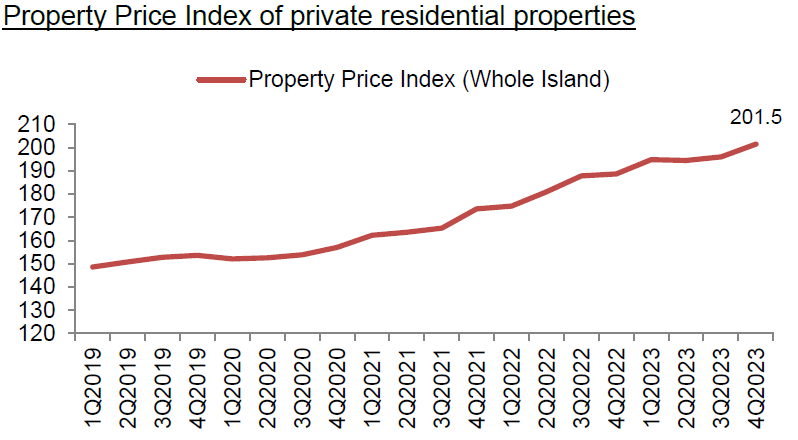Commentary: Is co-living a fad or here to stay in Singapore?
Co-living meets the needs of those looking for affordable and flexible housing, says The Assembly Place CEO Eugene Lim.

Co-living refers to staying in a residential unit that provides communal facilities and social programming. (Photo: iStock/Edwin Tan)

This audio is generated by an AI tool.
SINGAPORE: Private home rentals rose by about 30 per cent in 2022, the most in 15 years, and increased again by about 9 per cent in 2023.
And while rentals have started to taper off, Singapore is the most expensive place to rent private property in the Asia Pacific, according to 2023 data from the Urban Land Institute.
Property prices too have jumped, with the Urban Redevelopment Authority private property index continuing to reach ever-higher levels.

It is against this backdrop of rising property prices and rents that co-living has emerged as a more affordable housing option. Co-living refers to staying in a residential unit that provides communal facilities and social programming.
Because it is a relatively new concept, some may think of co-living as a fad. But developers and housing observers believe that co-living is here to stay, amid high property prices and demand from young professionals.
HERE TO STAY
There are many models of co-living. Some units have three different people living in three different rooms. There are also whole buildings that have different types of configurations to accommodate any number of people.
Whichever the setup, the idea is simple: People living together in a small community.
There are benefits to co-living over conventional rentals of rooms or apartments. The first is that co-living comes with shorter leases from three months. This means that individuals are not locked into long contracts.
Second, community counts. Most co-living operators offer programmes that aim to build stronger bonds between residents. This may range from regular games to movie nights and book clubs.
Third, cost. Many co-living spaces offer just a room for rental, while others offer a bed and table. This allows individuals to rent a room for about S$1,000 in a central location.
With up to 85 per cent of co-living guests under 40 years old and many still finding a foothold in their careers, the sector’s clientele is relatively price-sensitive.
Challenges such as inflation and financing costs abound for co-living operators. However, co-living companies cannot overprice their products, especially in a highly competitive market of about 20 players with consolidation on the horizon.
Flexibility, community and costs are key reasons why co-living has taken off in cities such as London, San Francisco, New York and Singapore over the past few years. In Singapore, it is not uncommon for co-living operators to report 90 per cent occupancy.
CO-LIVING AS A HOUSING SOLUTION
Beyond short-term drivers, there are long-term factors that are likely to ensure that co-living will continue to thrive in Singapore.
For one thing, land is finite. And while buildings are getting taller, there is a limit to how many more new buildings can be built. Instead, a better way would be to reuse buildings more efficiently.
Take the housing of nurses for example, who are in high demand as Singapore ages. MOH Holdings in August 2023 launched a tender for five sites with vacant buildings to be retrofitted into hostels for a total of 1,800 foreign healthcare workers. In a joint venture, The Assembly Place and dormitory operator TS Group won the tender for three of those sites.
Another factor is simply that consumer lifestyles are changing, especially for foreigners. A class of mobile young talent from overseas, such as those in the tech industry, are moving from country to country, seeking the best opportunities.
They may not want to buy a home, especially as stamp duties have been doubled for foreigners. Still, they are looking for housing options with amenities. Being able to cater to this group is critical as Singapore looks to attract the world’s best talent.
The Singapore government has recognised this shift in lifestyles and has progressively allocated more state-owned buildings such as heritage shophouses to be turned into co-living spaces. With many of these developments situated on the city fringe, it also allows co-living companies to avoid the high entry costs of downtown developments.
With almost 10,000 co-living rooms in Singapore, the concept is still relatively new - it is but a fraction of the roughly 80,000 homes rented out in Singapore in 2023 and an overall existing private housing stock of over 400,000.
In short, co-living is unlikely to replace home ownership. It is not competing with traditional rental properties either.
Instead, co-living meets the needs of those looking for affordable and flexible housing, as well as those who want to live in a community, rather than a place.
To this end, co-living is not a fad but a permanent solution that is only likely to grow in importance in the years ahead.
Eugene Lim is CEO and Founder of The Assembly Place, a co-living company.



















